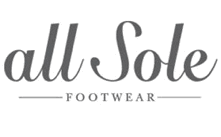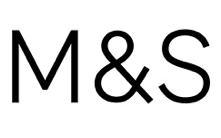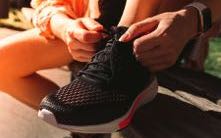 Hokas, Brooks, On, Asics, Nike, Saucony and New Balance are just some of the many great running shoe brands out there, but knowing which one is right for you in terms of comfort, as well as your personal gait is another story. We detail how to choose running shoes in our buying guide below, including tips on what to consider based on where you run, how often you run, as well as how you run. And, for the best Black Friday deals on running shoes and trainers in the UK this November, be sure to check back here for specific listings.
Hokas, Brooks, On, Asics, Nike, Saucony and New Balance are just some of the many great running shoe brands out there, but knowing which one is right for you in terms of comfort, as well as your personal gait is another story. We detail how to choose running shoes in our buying guide below, including tips on what to consider based on where you run, how often you run, as well as how you run. And, for the best Black Friday deals on running shoes and trainers in the UK this November, be sure to check back here for specific listings.
See Also: Clothing, Shoes & Accessories | Treadmill & Exercise Bikes
Shops With Trainers & Running Shoe Offers
Trainers & Running Shoe Buying Guide
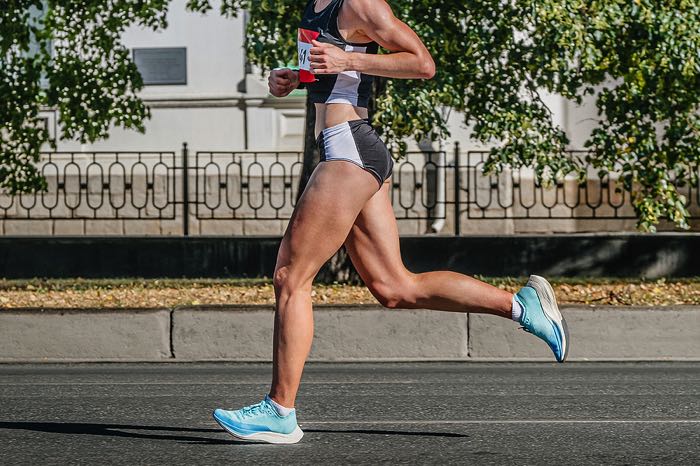
If you’re looking at improving your fitness then one of the first things you’ll want to do is to ensure that your footwear is appropriate. Even if you’re not all that interested in getting fitter but just want to get some new trabs, you would do well to ensure that you’ve spent a bit of time thinking about what it is that you want to get out of them. There are numerous reasons why someone might be looking at getting some new trainers, up to and including the idea of having some sort of chronic foot pain, like plantar fasciitis, that requires comfort above all else.
In some ways, you might think that buying a pair of running shoes or trainers would be easy enough. You pick a pair that you like the style and colour of and go for them. In reality, however, things are a little bit more complicated for those that wish to ensure they’re buying a pair that offer them more than just a fashion statement. That might not be what some people want to hear given the sheer number of running shoes that are available, but getting your selection right can not only ensure you hit your personal best, it can also stop you from getting foot pain and better hit your stride.
Think About the Fit
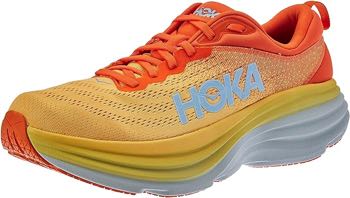
One of the most crucial things to do when you’re looking for new shoes (and this is true of all shoes, not just running ones), is to make sure that you get ones that fit you correctly. Running shoes are designed in order to fit your foot as well as possible, with different parts of the shoe intended to interact with specific parts of your foot. You will often read loads of key words if you decide to do some research into your trainer choice, so understanding what people are talking about is crucial to making the right choice. As an example, everything above the sole is the upper.
Uppers are usually made with layers of fabric, whilst there is often a mesh in their and it is typically glued together. Modern trainers tend to be 3D printed and knitted, so they make a seamless one-piece fit that offers support where needed. The bit that is the wrap that holds the heel in place is known as the ankle collar, with some shoes promising thick padding for comfort and others looking to the shape to keep the ankle bone cradled. Look out for whether your foot slips and whether the back of the collar tends to irritate your achilles, given this could be crucial to comfort.
There is a semi-rigid cup inside the rear of the foot of the trainer that your heel sits in. This is known as the heel counter and you’ll want to make sure you get the right type of support their for your own needs. Heel counters tend to offer motion control, with both neutral and stability shoes using them. You will want to make sure that your heel is supported at the same time as your ankle is getting a good range of motion. The reinforced area around the arch of your foot between the ball and the ankle is the saddle. This works with the laces to keep the shoe secure on your foot.
The section of the upper that ranges from the front of the eyelets to the end of the trainer is the toebox. You will normally see some sort of reinforced toe bumper to keep the fabric off your toes and stop you from stubbing them, but that isn’t always the case. The best trainers will allow your forefront to flex and spread out lengthwise and with the width in order to allow a natural movement. If any of your toes are rubbing then you’re probably not in the right size shoe. If you can wiggle all of your toes individually then you’re on the right track where the toebox is concerned.
How Much Cushioning Do You Need?
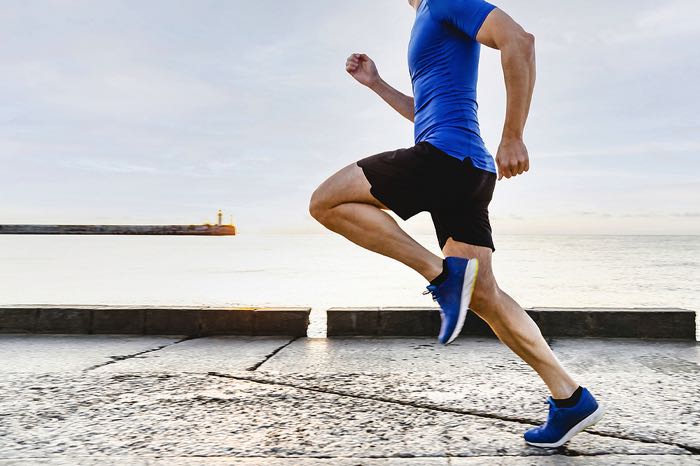
When it comes to buying trainers and running shoes, a lot of people will want them to be as cushioned as possible. The problem is, the more cushioned a shoe is, the less responsiveness you’ll get and a balance between cushioning and responsiveness is crucial when you’re looking to run as quickly as possible. The material used in the midsole will look to minimise how much impact shock you will feel in your heel when it strikes the floor. Some shoes have a ‘crash pad’ area on the outer edge of them that is designed to smooth out your landing and take some of the blow.
In reality, it is actually about perceived comfort rather than actual comfort. There is research that suggests that the more cushioning you have in a shoe the harder you land. As you run, you want the shoe to land as you would expect and roll into the stride in a natural way. Whilst heel cushioning looks to protect the heel, forefront cushioning aims to reduce the forces of your stride that occur when you push off into the next stride. This protects the structure of the foot, with ‘energy-return’ material used in modern trainers aiming to protect you and propel you at the same time.
In essence, there are four different cushioning levels that you’ll be able to buy. Maximum cushioning is exactly as it sounds, promising thick padding in the middle of the shoe in order to allow for a plush feel. Thicker, softer soles are often preferred by those that tend to do long distances, but there are certainly some that do not enjoy the squishy feeling of such trainers. They might prefer the better balance of moderately cushioned shoes, which strike something of a balance between the pillow-soft cushioning of maximum comfort and a complete lack of any cushioning.
Minimal cushioning is what you will want to look for if you want to feel the ground beneath your feet. There are many who use minimalist shoes because they feel as though it more readily mimics a more natural gait. They offer some protection, but not so much that you can barely feel what it is that you’re running on. Barefoot shoes obviously take this to the extreme, with very little cushioning and no arch support. These trainer types are very much a matter of personal preference, but if you like it then you will know exactly what it is that they offer.
What Surface You’re Running on Matters
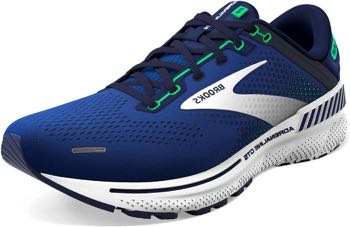
It might seem obvious, but having a sense of what surface it is that you’re going to be running on can be important when it comes to picking the right running shoes. The part of your shoe where the rubber meets the surface is known as the outsole. It is usually made of rubber, with some shoes opting for foam compounds that are placed in strategic areas in order to increase the life of the shoe. Some designers look for bounce and flexibility in their design of the outsole, whilst others will opt for those that offer you more traction and durability for specific surfaces.
If you tend to do a lot of trail running, for example, then you might want to look for a shoe that offers more traction and even some waterproofing. Do bear in mind, though, that waterproof shoes tend to be much less breathable, so using them on hot days or when you’re unlikely to encounter much water isn’t necessarily ideal. You want to find trainers that provide stability underfoot as well as comfort, thinking about the surface you’ll be running on. If you run on grass a lot, for example, then you’ll want to ensure your shoes aren’t too slippy, especially when it’s wet.
For people looking to run primarily on the road, you want to aim for a shoe that is light and flexible. You will be pounding hard pavements, so having some cushioning will be crucial to comfort, but you need to get the balance right in order to ensure that you don’t end up with shoes that are too heavy. The same is true for those that mainly run on treadmills or actual running tracks. These sorts of trainers usually have flatter soles that are smoother, allowing for consistency when you’re hitting the road for your run and hoping to achieve your personal best.
Trail-running shoes, on the other hand, are made for people that will be running in more changeable environments. They will boast larger lugs on the bottom for better grip, often being fortified with plates that will offer protection from the likes of sharp rocks or other objects. They are usually much stiffer in the midsole, promising more support. You can also look for cross-training shoes, which are designed specifically for use in a gym or during any activity that asks you to have more contact with the ground rather than thick platforms with loads of cushioning.
Looking at the Heel to Toe Drop

One of the key things to look out for when you’re buying some trainers is the heel-toe drop. This is the difference in height between the heel and the ball of the foot when you’re standing up in the shoe. There is some disagreement between experts about the importance of a shoe’s drop when it comes to injuries. What most agree on, though, is that different drops will put various levels of force on the leg, altering your stride. There are some companies that specialise in what are known as zero-drop shoes, meaning that there is no difference between heel and toe.
These are the equivalent of walking around barefoot, which might put your foot under too much pressure depending on your arches. Arch support can be important in a running shoe, so the best thing that you can do is to pick some shoes that feel right when you’re wearing them, reducing any stress on certain parts of your foot. You need to find a trainer that feels just as good on the touchdown as it does on the toe-off, so think about how much support you’re going to want and then work your way back from there. Big drops might not be all that comfortable for some people.
How Do You Run?
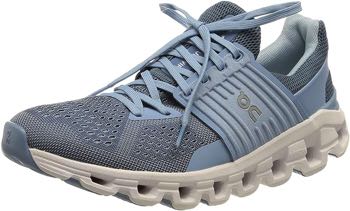
If you have never undergone a gait analysis, it might be worth investigating whether there is anywhere nearby where you can get this done. There are numerous technologies used by running shoe designers in order to ensure that you run as well as possible, but wearing the wrong type of trainer can end up doing you more damage than good. Trainers feature the likes of guide rails, dual-density foams and medial posts in order to keep the foot from excessive motion, but understanding what motion your foot does naturally will help you to pick the right shoe type.
It is generally agreed that most people don’t need pronation support, but there is definitely a sense that some runners prefer the control that they get from stability devices. If you tend to over-pronate then you’ll want to be looking for shoes that offer some stability features. Do bear in mind, though, that most of the trainers that are sold on the open market only have minor corrections in them. If you have a major problem with your gait then you will be best served speaking to a specialist who can look at getting you some corrective inserts, for example.
Pick the Shoes You Find the Most Comfortable
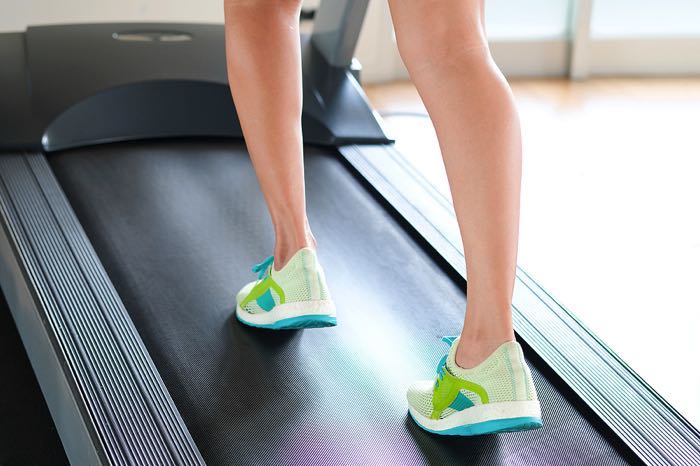
In many ways, it seems obvious to say that you should pick the running shoes that you find the most comfortable. Even so, a lot of people tend to overthink their shoe buying experience and look at countless different metrics without thinking about whether or not the shoe is actually all that comfortable. For some, there is a desire to have extreme levels of cushioning, whilst for others that feels as though they’re running on marshmallows and couldn’t be less pleasant a shoe-wearing experience. You need to try a few shoes on and see which ones you actually like wearing.
Sadly, there is no exact way to pick the idea running shoe. For many, all they can do is go for a trial-and-error approach, working out as they go what it is that they like about some trainers and don’t like about others. You will know what it is that you want from a running shoe, so keep that in mind when you’re shopping. Ensure that you don’t lose sight of the thing you’re hoping to get from your trainer and you’ll be better placed to make the right choice. One of the best things that you can do is to think back over previous running shoes that you’ve owned and the ones you liked the most.
If you have suffered from recurring injuries, you should investigate whether the running shoe that you wore contributed to that. If you are prone to plantar fasciitis, for example, you might well want a shoe with excellent heel cushioning in order ease the pain. There are a wealth of reasons why you might have ended up suffering on account of the shoe that you were wearing, so think about whether you’ve worn ones with too much stability in the past and pull back on that front, or not enough cushioning and try to find some trainers that offer you a little bit more.
Trying on Running Shoes
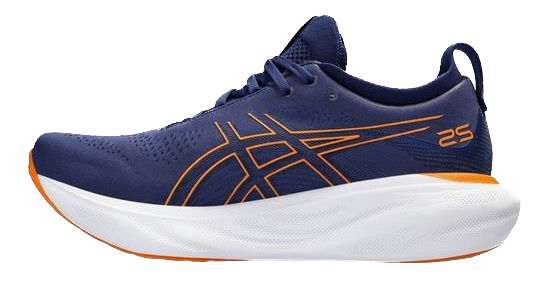
One of the best things that you can do is to try on various running shoes in order to get a sense of which ones feel the best. If you’re going to do that, though, make sure that you do it properly. What we mean by that is that you’ll want to do what you can in order to ensure that you’re replicating what you’d do in the real world. If you use an orthotic, make sure you have that with you when your trying trainers on. If the orthotic would normally replace the insole that comes with the shoe, take the insole out before you start walking around the shop trying them out.
Similarly, if you know that you tend to wear a specific type of sock when running, take your socks with you. You can even go so far as to make sure that you’re wearing a sports bra if you tend to wear one when you’re running, given the fact that this will change how you feel. There are some stores, more usually online, where you’ll be able to wear the trainers out and about in order to properly road test them. This isn’t always the case, though, so if you aren’t allowed to wear them out that doesn’t mean that you can’t wear them around the house as much as possible before deciding whether to keep them or not.
Another thing that you should bear in mind when you’re trying on running shoes is that not all manufacturers use the same sizes. That is to say, just because you’re a size 8 with one shoe maker doesn’t mean that you will be with another. You should definitely try on the specific trainers that you’re going to be buying, with a good thing to do being doing this in a store before heading home and seeing if you can find them cheaper online. Some brands even have different sizes within their own range, so assume nothing when it comes to how big, small or perfect each trainer will be.
Avoid Common Mistakes

When you’re buying, say, a dress shoe, you need to bear in mind that they will need to be broken in over time. Because of this, some people will try on some trainers and decide that it’s ok that they’re not comfortable straight away because they need to be broken in. That is one of the common mistakes that you should look to avoid when you’re buying running shoes. In reality, they should be comfortable as soon as you try them on, so if there is anything that you’re not sure about, such as them feeling too hard or offering a bit of friction, they probably aren’t right for you.
Another really common mistake that a lot of people make is that they buy their shoes based on the looks. If you’re a fashionista you might well find this all but impossible to resist, but concentrating solely on the looks of a shoe will almost certainly lead you to discomfort further down the line. First and foremost, you need to make sure that the shoe is comfortable and is going to provide you with what you need. Of course the look of the trainer matters, but you can have the best looking trainers in the world that will be useless if they cause you pain whilst you’re wearing them.
In terms of rookie errors, one of the biggest ones that you can make is also one of the easiest ones to fix: go shopping at the right time of day. Your feet will start to swell from the moment that you get up, usually reaching their climax by about 5pm. If you go shopping in the morning, the shoes that you buy will almost certainly be too small if you try them on again in the early evening. This is a simple thing to sort out by ensuring that you shop later in the day, but many people fail to realise how important it is and what a big difference it will make to their shoe buying experience.

